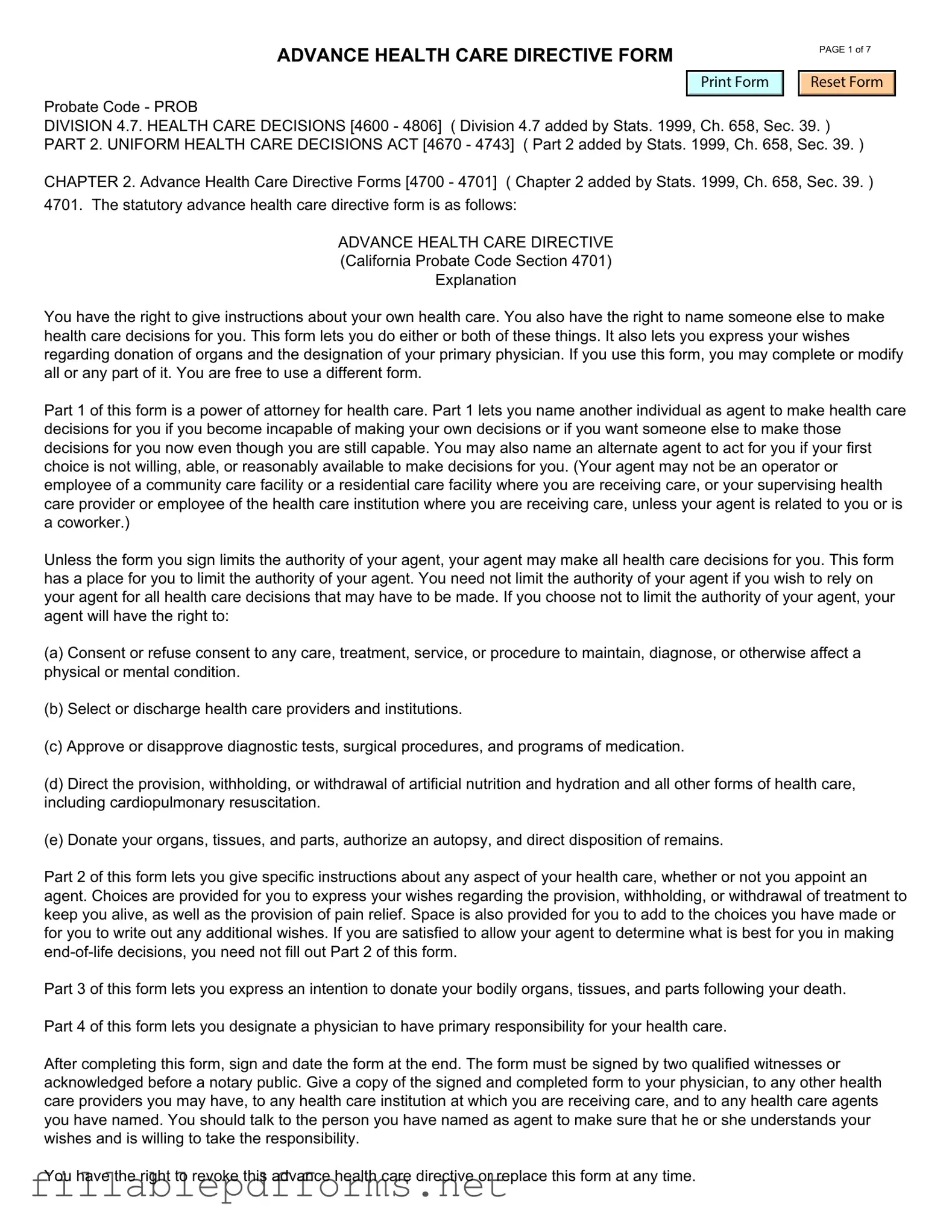California Advanced Health Care Directive PDF Template
The California Advanced Health Care Directive form is a legal document that allows individuals to outline their healthcare preferences in case they become unable to communicate their wishes. This directive empowers you to appoint a trusted person to make medical decisions on your behalf and specify your treatment preferences. Understanding this form is essential for ensuring that your healthcare choices are respected and followed.
Launch Editor Here
